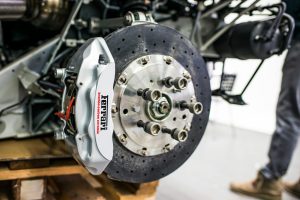North American Car Buying Trends in a Changing Economy
The North American car buying industry has undergone significant changes in recent years. With economic uncertainty and fluctuating trends, consumers have become more cautious when it comes to purchasing a new vehicle. This has led to shifts in buying patterns, preferences, and overall market trends. In this article, we will take a closer look at the current North American car buying landscape and how it has been impacted by the changing economy.
The Impact of the Economy
The state of the economy plays a crucial role in consumer behavior, and the car buying industry is no exception. In uncertain economic times, consumers tend to postpone major purchases, including buying a new car. This can be seen in the recent decline in car sales across North America.
In 2020, the COVID-19 pandemic brought the global economy to a standstill, and the automotive industry was hit hard. According to Statista, car sales in the United States and Canada dropped by 25% and 29%, respectively, compared to the previous year. The unprecedented crisis not only affected consumer spending but also disrupted the manufacturing and supply chain of cars.
The Shift Towards Used Cars
The economic downturn has also led to a significant shift in consumer preferences towards used cars. With financial uncertainties and job losses, many potential car buyers are opting for more affordable options. Used car sales have increased by 6.7% in the United States and 2.1% in Canada, as reported by Autotrader.
Furthermore, used cars are becoming a popular choice among budget-conscious millennials who are looking for a reliable vehicle without breaking the bank. This trend is expected to continue even after the economy recovers, as consumers have become more conscious of their spending habits.
The Rise of Online Car Buying
The pandemic has also accelerated the trend of online car buying. With social distancing guidelines and stay-at-home orders in place, consumers are turning to online platforms to research and purchase cars. In fact, according to Cox Automotive, online car sales grew by 33% in April 2020.
The convenience and safety of online car buying have become increasingly appealing to consumers, and car dealerships have had to adapt to this shift in consumer behavior. Virtual showrooms, online financing options, and home delivery services have become the new norm, and this trend is expected to continue even after the pandemic is over.
The Rise of Electric Vehicles
Amid a changing economy, the automotive industry is also experiencing a shift towards more sustainable and environmentally friendly options. Electric vehicles (EVs) have been gaining popularity in North America, and the pandemic has only accelerated this trend.
As more consumers look for greener transportation solutions, the demand for EVs has surged, leading to automakers investing heavily in electric vehicle technology. According to BNEF, EV sales are projected to reach 31.1 million by 2030 in North America, accounting for 54% of total car sales.
The Influence of Government Incentives
Government incentives and tax breaks have also played a significant role in the growing popularity of electric vehicles. In an effort to reduce emissions and combat climate change, governments in the US and Canada have introduced various incentive programs for EV buyers. This has made it more affordable for consumers to make the switch to an electric vehicle.
Conclusion
The North American car buying trends have undoubtedly been impacted by the changing economy. Economic uncertainties, shifts in consumer preferences, and the rise of electric vehicles have all contributed to the ever-evolving industry. As we look towards the future, it is essential for car manufacturers and dealerships to understand and adapt to these trends to stay competitive in the market.
In conclusion, the current economy has forced the automotive industry to pivot and adapt to changing consumer needs. Whether it’s opting for used cars, buying online, or choosing electric vehicles, the North American car buying landscape continues to evolve in the face of economic shifts.









